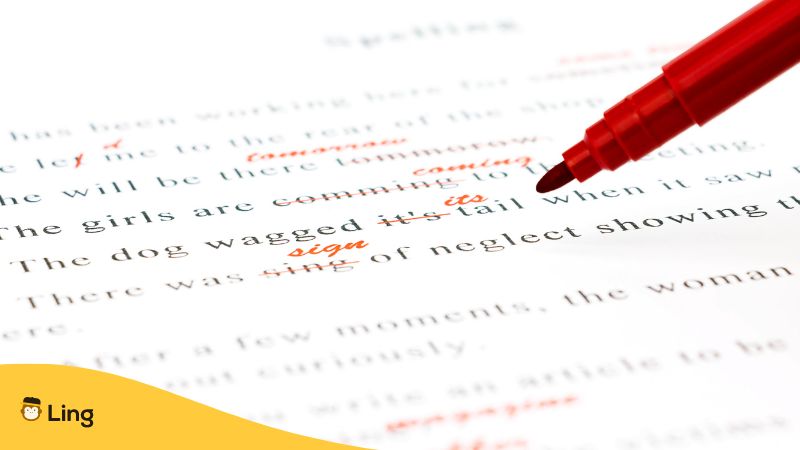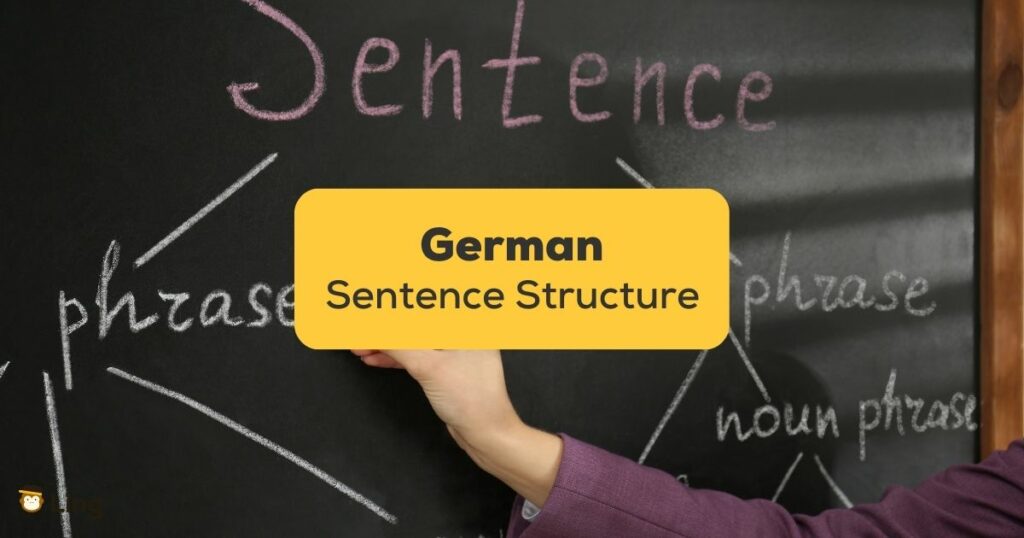Are you ready to embark on a thrilling adventure through the twists and turns of German grammar? Buckle up because we’re about to dive headfirst into the fascinating world of basic German sentence structure. Get ready to unravel the secrets of this language like a seasoned detective solving a linguistic puzzle!
So, you might be wondering why you should even bother with mastering the basic German sentence structure. Can’t you just rely on memorizing vocabulary and stringing together words like a linguistic wizard? Well, hold your horses! While a rich vocabulary is undeniably important, it’s like having a shiny new car without knowing how to drive it. Without a solid grasp of sentence structure, your language skills will be akin to a roller coaster ride without tracks—wild, unpredictable, and often leaving your listeners bewildered.
Do you know why I advocate that you start learning the basic sentence patterns? Well, it’s because I’ve been in a tricky situation before!
A few years back, I remember sitting in a bustling café in Berlin, eager to connect with the locals and immerse myself in the vibrant culture. Armed with a decent vocabulary, I’m ready to strike up conversations left and right. But here’s the thing: despite my arsenal of words, I quickly realize that constructing coherent sentences is the real key to effective communication!
As I fumble through my first few conversations, relying solely on vocabulary, I notice puzzled looks and strained efforts from my conversation partners to decipher my meaning. It’s like speaking in fragments, hoping they’ll magically connect the dots. That’s when it hits me—the importance of mastering basic sentence structure.
You see, it’s like building a sturdy bridge between me and the people I’m conversing with. It’s the glue that holds words together, forming a meaningful and understandable message. Learning how to construct sentences properly allows me to express my thoughts with clarity and precision, making it easier for others to follow along.
As I dive deeper into understanding German sentence structure, it’s like unlocking a treasure trove of communication possibilities. Sentences become my weapons of expression, empowering me to share my ideas, tell stories, and engage in genuine conversations. No longer am I confined to uttering isolated words; I can weave them together in a beautiful tapestry of language.
So, my friend, if you’re embarking on a language-learning journey, remember that vocabulary alone is just the tip of the iceberg. Level up your skills by reading the sections below!
Understanding German Sentence Structure
German is known for its complex grammar, and sentence structure is no exception. While it may seem intimidating at first, once you grasp the fundamentals, constructing sentences in German becomes more manageable. So, let’s start by examining the various elements that make up the German sentence structure.
Subject-Verb-Object (SVO) Order
The most common sentence structure in German follows the Subject-Verb-Object (SVO) order, just like in English. This means that the subject of the sentence typically comes first, followed by the verb and then the object. For example:
- Das Kind spielt (The child plays)
Here, “Das Kind” (The child) is the subject, “spielt” (plays) is the verb, and there is no specific object. This straightforward SVO structure is prevalent in simple German sentences. So, imagine you’re chatting with a German friend about your weekend plans. You could say, “Ich gehe ins Kino” (I am going to the cinema). Here, “Ich” (I) is the subject, “gehe” (am going) is the verb, and “ins Kino” (to the cinema) is the object. Boom! You’ve conveyed your intention effortlessly using the SVO structure.
Now, don’t be fooled into thinking that every German sentence strictly follows the SVO order. As we explore further, you’ll discover that German has some flexibility up its grammatical sleeves. But for now, embrace the simplicity and power of SVO, and let it be your trusty starting point in constructing German sentences.
Inversion In Questions
In a question, the usual Subject-Verb-Object (SVO) order takes a backseat, and the verb confidently marches to the front, leading the way. It’s as if the verb says, “Hey, subject, you can hang back for a moment. I’ve got this!” This switcheroo grabs the listener’s attention, signaling that a question is on the horizon is known as inversion. For instance:
- Spielst du Tennis? (Do you play tennis?)
In this example, “Spielst” (Do you play) is the verb, and “du Tennis” (you tennis) is the subject. The verb takes the first position, and the subject follows.
So, imagine you want to ask your German friend, “Do you like pizza?” In English, we simply switch the positions of the subject and the verb. But in German, we take it up a notch. We lead with the verb and then follow it up with the subject. So, the question becomes, “Magst du Pizza?” Here, “Magst” (like) jumps to the front, setting the stage for the question, and “du” (you) gracefully takes its place after the verb.
Now, don’t worry if this inversion concept feels a bit like riding a roller coaster for the first time. With a bit of practice, it becomes second nature, and you’ll be asking questions like a pro. Inversion adds a touch of flair to your German conversations, making them more engaging and dynamic.
But wait, there’s more! Inversion isn’t just limited to yes/no questions. It also applies to questions that start with question words like “what,” “where,” “when,” and “how.” These question words lead the pack, followed by the verb and then the subject. It’s like a linguistic dance, where each element takes its turn to shine.

Basic Sentence Patterns For Beginners
Pattern 1: Subject + Verb
The first pattern we’ll explore is the simplest one: subject + verb. This pattern forms the backbone of many sentences and helps convey basic information. For example:
- Ich spiele (I play)
In these sentences, the subject “I” and the verb “play” (in English) or “spiele” (in German) create a straightforward statement about an action.
Pattern 2: Subject + Verb + Object
Expanding on the previous pattern, we can introduce an object to the equation. Adding an object provides more context and depth to the sentence. Let’s take a look:
- Sie liest ein Buch (She reads a book)
Here, “She” or “Sie” is the subject, “reads” or “liest” is the verb, and “a book” or “ein Buch” is the object. This pattern allows us to express actions that involve direct objects.
Pattern 3: Subject + Verb + Adjective
Moving on, we have a pattern that incorporates adjectives. Adjectives describe and provide more information about the subject. Check it out:
- Er ist groß (He is tall)
In these sentences, “He” or “Er” is the subject, “is” or “ist” is the verb, and “tall” or “groß” is the adjective. This pattern helps us express attributes or qualities.
Pattern 4: Subject + Verb + Adverb
Adverbs spice up our sentences by adding information about how an action is performed. Let’s see it in action:
- Sie rennen schnell (They run quickly)
Here, “They” or “Sie” is the subject, “run” or “rennen” is the verb, and “quickly” or “schnell” is the adverb. This pattern allows us to describe the manner in which an action is carried out.

Noun Declensions And Cases
Noun declensions play a crucial role in German sentence structure. Depending on their grammatical function, nouns change their forms to reflect different cases. The four main cases in German are the nominative, accusative, dative, and genitive.
Nominative Case
The nominative case is used for the subject of a sentence or for nouns that are used predicatively. In the following example, the noun “Frau” (woman) is in the nominative case:
- H4: Die Frau isst einen Apfel. (The woman is eating an apple.)
Accusative Case
The accusative case is used for direct objects or objects that receive the action of the verb. Consider this example:
- H4: Ich sehe den Mann. (I see the man.)
In this sentence, “den Mann” (the man) is in the accusative case, indicating that the man is the direct object of the verb “sehen” (see).
Dative Case
The dative case is used for indirect objects or objects that receive the action indirectly. Here’s an example:
- H4: Er gibt seiner Schwester ein Geschenk. (He gives a gift to his sister.)
In this sentence, “seiner Schwester” (to his sister) is in the dative case, indicating that the sister is the indirect object of the verb “geben” (give).
Genitive Case
The genitive case indicates possession or origin. It is less commonly used in modern German but still appears in certain contexts:
- H4: Das Buch meines Vaters liegt auf dem Tisch. (My father’s book is on the table.)
In this example, “meines Vaters” (my father’s) is in the genitive case, indicating possession.
Learn German With Ling!
Understanding the basic German sentence structure is essential for effective communication in the language. By grasping the SVO order, the use of inversion in questions, the positioning of adverbs, and the role of noun declensions and cases, you can confidently construct meaningful sentences in German. It’s like having a sturdy foundation upon which you can build your language skills. But hey, we understand that German grammar can sometimes throw you for a loop.
That’s where Ling comes to the rescue!
With its interactive lessons, engaging exercises, and personalized feedback, Ling is your go-to companion for conquering those tricky grammar hurdles. Whether you’re tackling sentence structure, noun declensions, or any other aspect of German grammar, Ling provides a supportive learning environment that adapts to your needs. So, if you’re ready to take your German to the next level, jump on board and give Ling a whirl. With practice, persistence, and the help of Ling, you’ll be mastering German grammar like a language superstar in no time!
Download it now for FREE from the App Store or Play Store to get started!



































































